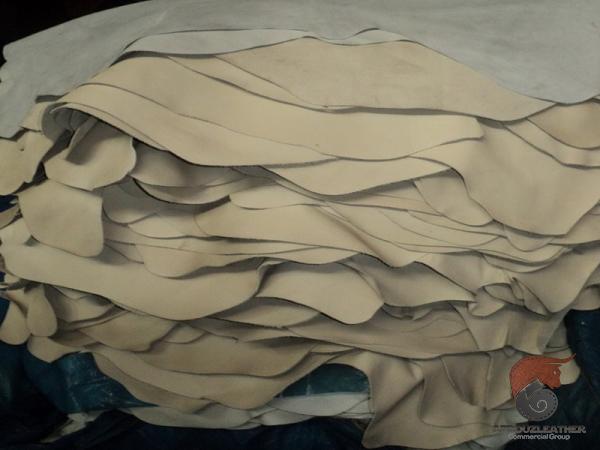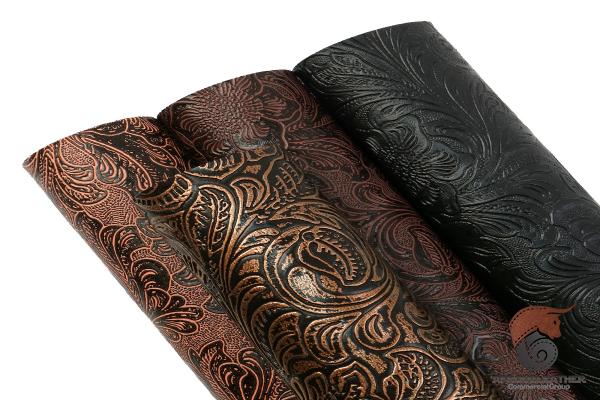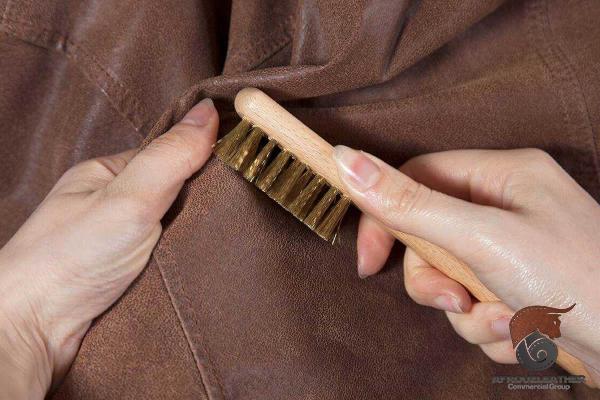Raw goat leather is a durable and versatile upholstery material made from the hide of goats. It is highly sought after for its unique properties, exceptional quality, and natural appeal. This summary will delve into various aspects of raw goat leather, including its production process, characteristics, applications, and market trends. 1. Production Process: The production of raw goat leather involves several stages, starting with sourcing the hides from goats raised in different parts of the world, including India, China, and the Middle East. After the slaughtering process, the hides are treated with salt to preserve them and prevent decay. They are then transported to tanneries, where they undergo a series of treatments, such as soaking, hair removal, fleshing, and pickling, to prepare them for tanning. Tanning is a crucial step in the leather production process, and there are various methods employed for goat leather.
leather
 Common techniques include vegetable tanning, which uses plant-based extracts to create a flexible and firm leather, and chrome tanning, which uses chromium salts to produce softer and more supple leather. After tanning, the hides are dried, softened, and undergo finishing processes, such as dyeing and buffing, to enhance their appearance and texture. 2. Characteristics of Raw Goat Leather: Raw goat leather is highly regarded for its exceptional qualities, making it a preferred choice in various industries. It boasts a balance of strength and flexibility, making it suitable for high-quality leather goods such as shoes, handbags, and garments. Compared to cowhide, goat leather is lighter in weight, more breathable, and easier to handle due to its finer grain. Additionally, raw goat leather is naturally water-resistant and possesses excellent resistance to abrasion, making it highly durable. It also has a distinctive grain pattern and attractive texture, providing a distinctive look to finished products. Moreover, the leather ages gracefully and develops a desirable patina over time. 3. Applications of Raw Goat Leather: Raw goat leather finds extensive applications in the fashion, accessories, and interior design industries due to its unique characteristics.
Common techniques include vegetable tanning, which uses plant-based extracts to create a flexible and firm leather, and chrome tanning, which uses chromium salts to produce softer and more supple leather. After tanning, the hides are dried, softened, and undergo finishing processes, such as dyeing and buffing, to enhance their appearance and texture. 2. Characteristics of Raw Goat Leather: Raw goat leather is highly regarded for its exceptional qualities, making it a preferred choice in various industries. It boasts a balance of strength and flexibility, making it suitable for high-quality leather goods such as shoes, handbags, and garments. Compared to cowhide, goat leather is lighter in weight, more breathable, and easier to handle due to its finer grain. Additionally, raw goat leather is naturally water-resistant and possesses excellent resistance to abrasion, making it highly durable. It also has a distinctive grain pattern and attractive texture, providing a distinctive look to finished products. Moreover, the leather ages gracefully and develops a desirable patina over time. 3. Applications of Raw Goat Leather: Raw goat leather finds extensive applications in the fashion, accessories, and interior design industries due to its unique characteristics.
Specifications of leather
 This leather type has a luxurious and elegant appearance, making it ideal for high-end designer products, including shoes, handbags, and wallets. Garments made from raw goat leather offer a comfortable fit, durability, and a soft feel, making them a popular choice among fashion enthusiasts. The leather’s breathability makes it suitable for accessories like belts and watch straps, while its water resistance ensures durability even in adverse weather conditions. Beyond fashion, raw goat leather is also utilized in the upholstery industry. It provides a refined and luxurious finish to furniture, car interiors, and aircraft seating. Its strength and durability make it resistant to wear and tear, allowing it to maintain its aesthetic appeal over an extended period. 4. Market Trends and Sustainability: The market for raw goat leather continues to grow, driven by increasing demand for high-quality leather goods and expanding consumer preferences. The fashion industry plays a significant role in driving the demand, with luxury brands incorporating goat leather into their product offerings. Moreover, sustainability has gained prominence in the leather industry. Goat leather offers certain advantages from a sustainability standpoint. Goats require less land and feed compared to cattle, making goat farming a more sustainable and resource-efficient option. Furthermore, goat hides are a byproduct of the meat industry, ensuring minimal wastage and reducing environmental impact.
This leather type has a luxurious and elegant appearance, making it ideal for high-end designer products, including shoes, handbags, and wallets. Garments made from raw goat leather offer a comfortable fit, durability, and a soft feel, making them a popular choice among fashion enthusiasts. The leather’s breathability makes it suitable for accessories like belts and watch straps, while its water resistance ensures durability even in adverse weather conditions. Beyond fashion, raw goat leather is also utilized in the upholstery industry. It provides a refined and luxurious finish to furniture, car interiors, and aircraft seating. Its strength and durability make it resistant to wear and tear, allowing it to maintain its aesthetic appeal over an extended period. 4. Market Trends and Sustainability: The market for raw goat leather continues to grow, driven by increasing demand for high-quality leather goods and expanding consumer preferences. The fashion industry plays a significant role in driving the demand, with luxury brands incorporating goat leather into their product offerings. Moreover, sustainability has gained prominence in the leather industry. Goat leather offers certain advantages from a sustainability standpoint. Goats require less land and feed compared to cattle, making goat farming a more sustainable and resource-efficient option. Furthermore, goat hides are a byproduct of the meat industry, ensuring minimal wastage and reducing environmental impact.
buy leather
 5. Challenges and Future Opportunities: While raw goat leather comes with numerous benefits, there are challenges to its production and market growth. Limited availability of raw goat hides in certain regions may impact the overall supply of this leather type. Additionally, fluctuating raw material costs and increasing concerns about animal welfare and sustainable sourcing pose challenges for the industry. However, with the growing emphasis on sustainability and ethical sourcing, the market for goat leather presents opportunities for leather manufacturers to adopt more responsible practices. Innovations in processing and tanning techniques can also enhance the product’s quality, leading to increased demand. Conclusion: Raw goat leather, with its durability, versatility, and unique characteristics, holds a prominent place in the leather industry. Its production process, coupled with its numerous applications, ranging from fashion accessories to upholstery, make it a highly sought-after material. As consumer preferences continue to evolve, the market for raw goat leather is expected to grow, driven by the demand for sustainable, high-quality leather products.
5. Challenges and Future Opportunities: While raw goat leather comes with numerous benefits, there are challenges to its production and market growth. Limited availability of raw goat hides in certain regions may impact the overall supply of this leather type. Additionally, fluctuating raw material costs and increasing concerns about animal welfare and sustainable sourcing pose challenges for the industry. However, with the growing emphasis on sustainability and ethical sourcing, the market for goat leather presents opportunities for leather manufacturers to adopt more responsible practices. Innovations in processing and tanning techniques can also enhance the product’s quality, leading to increased demand. Conclusion: Raw goat leather, with its durability, versatility, and unique characteristics, holds a prominent place in the leather industry. Its production process, coupled with its numerous applications, ranging from fashion accessories to upholstery, make it a highly sought-after material. As consumer preferences continue to evolve, the market for raw goat leather is expected to grow, driven by the demand for sustainable, high-quality leather products.

Your comment submitted.